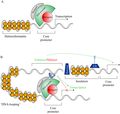
Size of this preview:
633 × 599 pixels. Other resolutions:
254 × 240 pixels |
507 × 480 pixels |
811 × 768 pixels |
1,105 × 1,046 pixels.
Original file (1,105 × 1,046 pixels, file size: 387 KB, MIME type: image/png)
File history
Click on a date/time to view the file as it appeared at that time.
| Date/Time | Thumbnail | Dimensions | User | Comment | |
|---|---|---|---|---|---|
| current | 02:45, 20 April 2023 |
 | 1,105 × 1,046 (387 KB) | Guest2625 | Uploaded a work by Philip Cowie, Ruth Ross, and Alasdair MacKenzie from Cowie, Philip, Ruth Ross, and Alasdair MacKenzie. 2013. "Understanding the Dynamics of Gene Regulatory Systems; Characterisation and Clinical Relevance of cis-Regulatory Polymorphisms" Biology 2, no. 1: 64-84. https://doi.org/10.3390/biology2010064 with UploadWizard |
File usage
The following pages on the English Wikipedia use this file (pages on other projects are not listed):
Global file usage
The following other wikis use this file:
- Usage on el.wikipedia.org